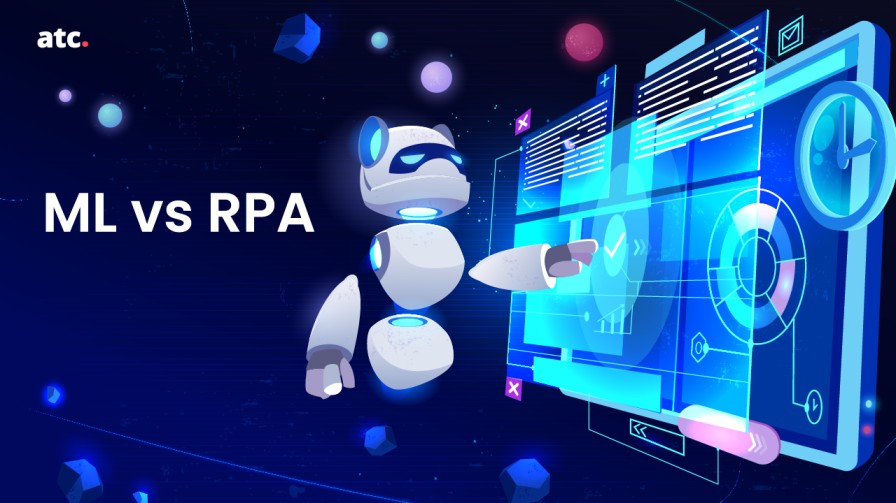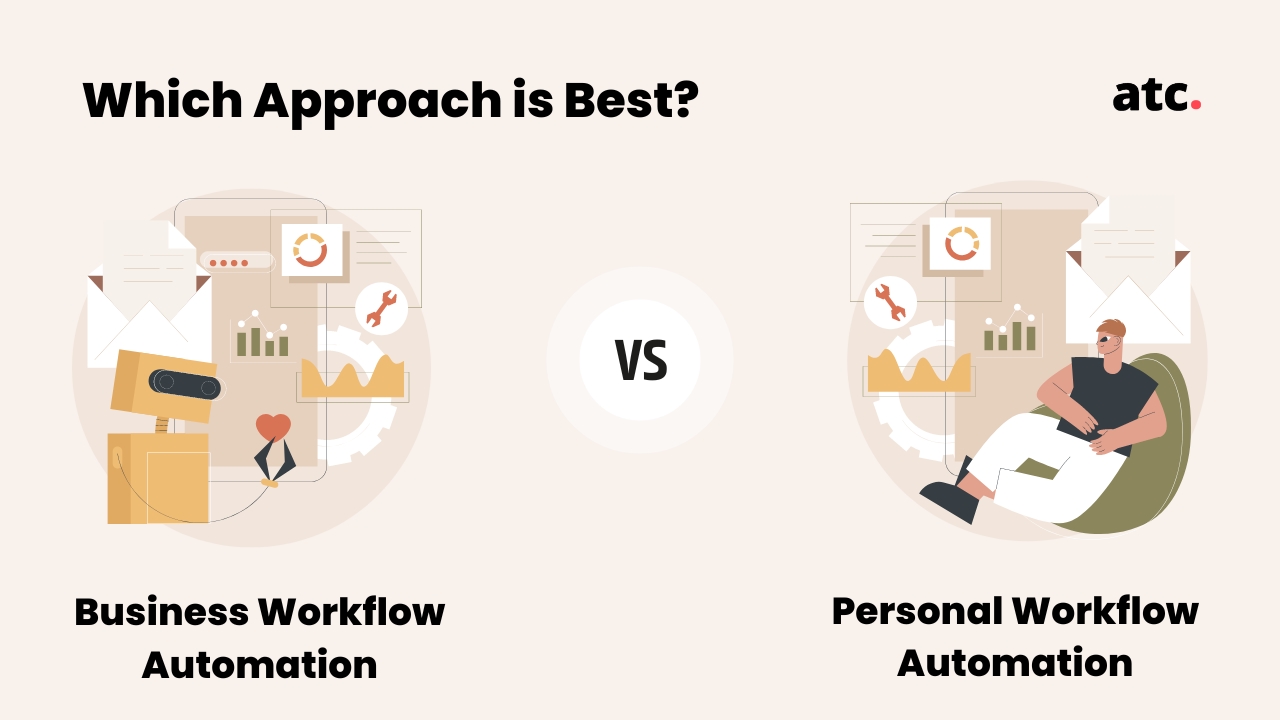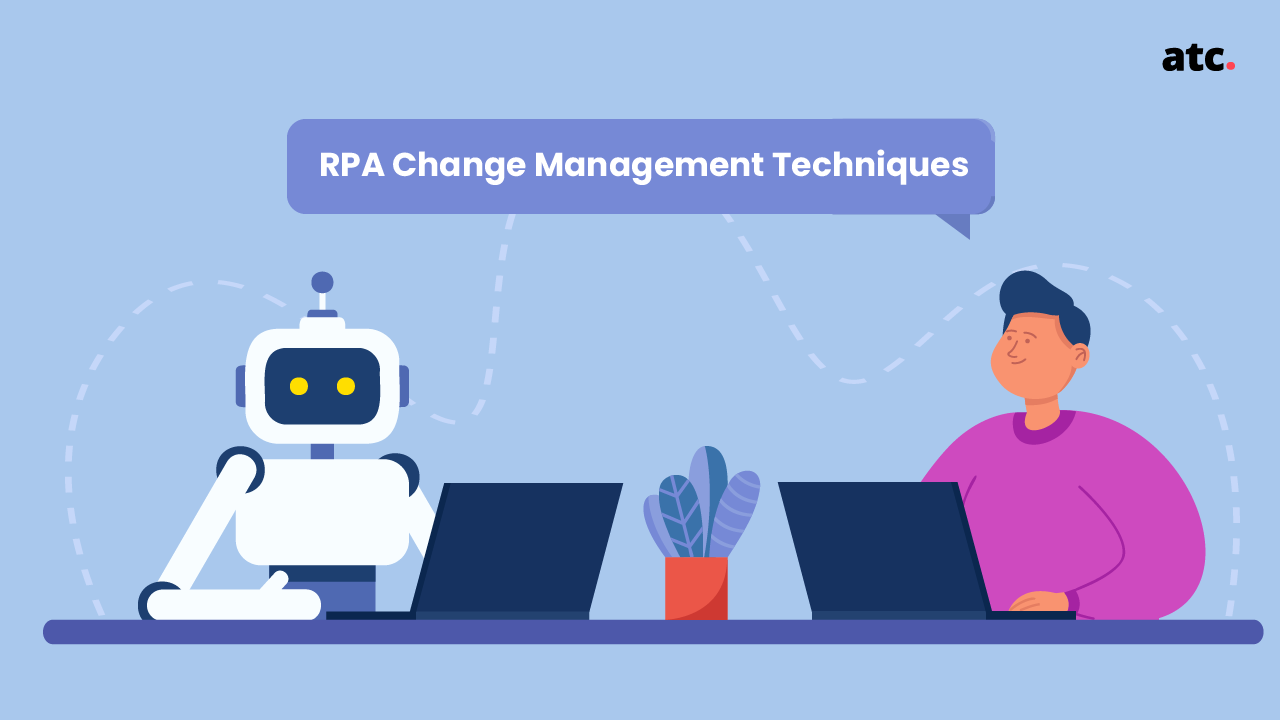Subscribe to the blog
Most businesses today are revamping their digital capabilities in a bid to stay competitive. From harnessing the power of data to optimizing IT development projects, technologies like artificial intelligence, machine learning, and robotic process automation are helping global companies curate stand-out customer experiences that increase revenue and build resilience.
While organizations have made phenomenal strides over the past two years in integrating digital capabilities into their operations, reports by Mckinsey show that most of them did not capture as much value as they initially expected.
The reason is crystal clear: Companies are not choosing the right technology stack and hence fail to utilize them fully.
To help you make the correct distinction, here’s a guide on machine learning vs robotic process automation, stating the purpose of these technologies, what they can do for your business, and which one to choose. Let’s dig in!
The Rise of Machine Learning (ML)
When you hear business owners say that data is the oil of the 21st century, it is in the context of using machine learning and big data for innovation. With roughly 2.5 quintillion bytes of data generated each day, tech giants are using machine learning to enhance their product features and create better value for consumers. Research shows that 74% of data scientists and C-level executives use machine learning for performance analysis and reporting.
So how is this possible?
Machine learning is a branch of artificial intelligence and computer science focusing on teaching computers to learn from data and improve. You can train algorithms to find patterns from large data sets and improve the accuracy of various business operations. The most important thing is that machine learning processes data and learns from it to improve.
Depending on what outcome you want to achieve, you can input the data, develop the model using relevant frameworks, train them, and optimize it through regular testing and analysis.
And this is a visual representation of how the machine learning process works, in general:
Popular Use Cases of Machine Learning
From entertainment to online shopping to healthcare, machine learning is rapidly becoming the fuel for businesses to ignite growth and innovation. Here are some real-life use cases of machine learning that you will find interesting:
- Threat Detection and Cybersecurity: Reports state that 3 out of 4 organizations are victims of ransomware attacks. For safeguarding your organization from these cyberattacks, machine learning algorithms can help by continuously analyzing data to detect malware in encrypted traffic or protect cloud data by detecting suspicious user behavior.
- Personalizing customer experiences: Companies like Netflix, Shopify, and Amazon use machine learning to offer relevant product recommendations to users based on their past data and browsing behavior. Many companies also send personalized in-app notifications to users about offers and discounts.
- Customer support: Chatbots and virtual assistants are helping companies make customer support more convenient and accessible to customers. Machine learning enables chatbots to learn when to send automated messages and when they should involve human intervention in a conversation. It also aids virtual assistants in sending guides, help articles, and videos whenever users feel stuck.
Unlocking the Value of Automation with Robotic Process Automation (RPA)
Robotic process automation, as the name suggests uses automation technologies to perform high-volume and repetitive tasks. They can mimic most human-operated functions, helping businesses to carry out multiple operations at speed and efficiency.
Also, if you want to understand how RPA has impacted key industries, here is a guide with some relevant insights.
In the context of machine learning vs robotic process automation, ML is more about deriving insights from large data sets, and RPA is about enhancing business processes. ML doesn’t require rules. It learns and adapts from the data and helps make a prediction or classification. RPA, on the other hand, follows a rule-based system and works in conjunction with people.
So far, all signs point to machine learning as having the upper hand in the business world. But do you think having one dominant technology will put you on the path of innovation?
Not really. You need to experiment and choose a combination of technologies that suits your business needs. Leading organizations are pushing their automation agendas forward and weaving AI, ML, and RPA to push the boundaries. The weaving of these technologies is also known as intelligent automation.
If you are interested in learning more about intelligent automation, here is a guide on how super-successful companies leverage the technology to beat the competition.
That said, RPA and ML complement each other well. And this is because machine learning is a subset of AI that can help RPA automate complex tasks.
What Are the Stakes Here?
After talking extensively about machine learning vs robotic process automation, it is clear that you cannot beat the competition by choosing either of them. They work well together. While incorporating them into your workflow has significant benefits, you may face some obstacles. Let’s explore the challenges below!
- Need For a Proper Infrastructure:
Deploying machine learning models or even integrating RPA requires you to analyze your existing infrastructure. This is because the ultimate success of these technologies depends on how suitable the environment is for the deployment of powerful applications. From storage to networking, machine learning and RPA needs all of these capabilities to deal with massive data sets.
You also need to prepare for upgrading the infrastructure in the future if you wish to scale your automation initiatives.
- Change Management And Data Protection:
One crucial aspect you need to know about machine learning vs robotic process automation is that implementing either can cause rippling effects. From cost-cutting to job replacement, these technologies require business leaders to practice effective change management practices.
IT leaders need to create an organizational culture of learning and improvement and provide appropriate skill development training to employees to ensure that they understand the changes happening and contribute towards optimizing the process.
Another factor you should take notice of is creating a data protection policy to ensure that sensitive and valuable data remains protected from outside tampering.
Create Better Value For Your Organization With ATC!
Organizations that have chosen the right set of technologies are already unlocking significant growth potential. They have figured out the art of balancing the risks with rewards. And this is the reason why companies like Netflix, Amazon, and Shopify remain at the top of the competition.
Want your organization to remain a step ahead of the competition? Derive the best value from technologies like artificial intelligence, machine learning, and robotic process automation by working with the top 5% of developers and software engineers at ATC.
We offer you the best IT team to ensure that you don’t encounter any deployment and infrastructure-related issues and that you can focus on strategic decision-making.
Start your automation journey today by dropping us a quick message here.




